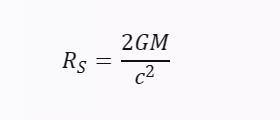Is there a miniature black hole in the sun?
There is a theory that inside the sun is a black hole. In some models, the size of that hypothetical black hole would be the size of Mercury. Or maybe the mass of that black hole is about 20 Earth. In some models, a miniature black hole keeps stars in one piece. The beginning of the fusion causes an energy shock that forms a miniature black hole. And the fusion energy from the star feeds that black hole. But the mercury-size black hole in the star is not realistic.
The miniature black hole acts as the mass center. It pulls particles to it and keeps extremely high-energy plasma in a ball-shaped form. That is an interesting model. And it explains why stars can keep their form. In this model, the asymmetry in energy flow causes a situation that which the reflection radiation between plasma particles can keep their form.
Because that black hole causes energy and radiation transfer inside it, that thing keeps the plasma in its form. The energy of the fusion feeds that black hole and denies its vaporization. When the energy level in the star's core decreases that causes the black hole's vaporization increases. The energy production area in star turns smaller.
The radiation pressure from the black hole. And its shell increases. And that thing pushes the star into a red giant. The thing is that maintaining the fusion of heavier elements requires more energy than hydrogen fusion. And more energy is needed to maintain fusion.
Then energy production ends and all material falls into a black hole, and reflects from its nucleus. That causes a shockwave that destroys the black hole and the stars around it.
Bing calculated the Schwarzschild radius, or the 20 earth-mass black hole event horizon size.
The Schwarzschild formula is used to calculate the event horizon's size.
In this formula:
G=Gravitational constant.
M=Black hole's mass
C= Speed of Light
You can see that the size of that black hole is not very big. And in some theories in the middle of all planets and regular-ball-shaped objects is a small black hole. The thing that supports the existence of this kind of miniature black hole is the sun itself. The energy level in its core is extremely high, and energy travels also into the star.
That energy will form the stading wave, before it can reflect to the star's shell. And sometimes somebody introduced a calculation. Without the miniature black hole, the star will simply detonate. In this model the black hole. That forms when nuclear fusion in a star begins. So miniature black hole would anchor materia in the stellar core.
Without that black hole, the outcoming energy that reflects from the star's core rips the star in pieces. The black hole transports energy out from the star's nucleus. And that thing forms the vacuum that ties star around this thing. Miniature black holes are also introduced as the reason why the Earth's core is so hot.
https://phys.org/news/2023-12-black-hole-sun.html
https://www.universetoday.com/164864/could-there-be-a-black-hole-inside-the-sun/
https://en.wikipedia.org/wiki/Quasi-star






No comments:
Post a Comment
Note: Only a member of this blog may post a comment.